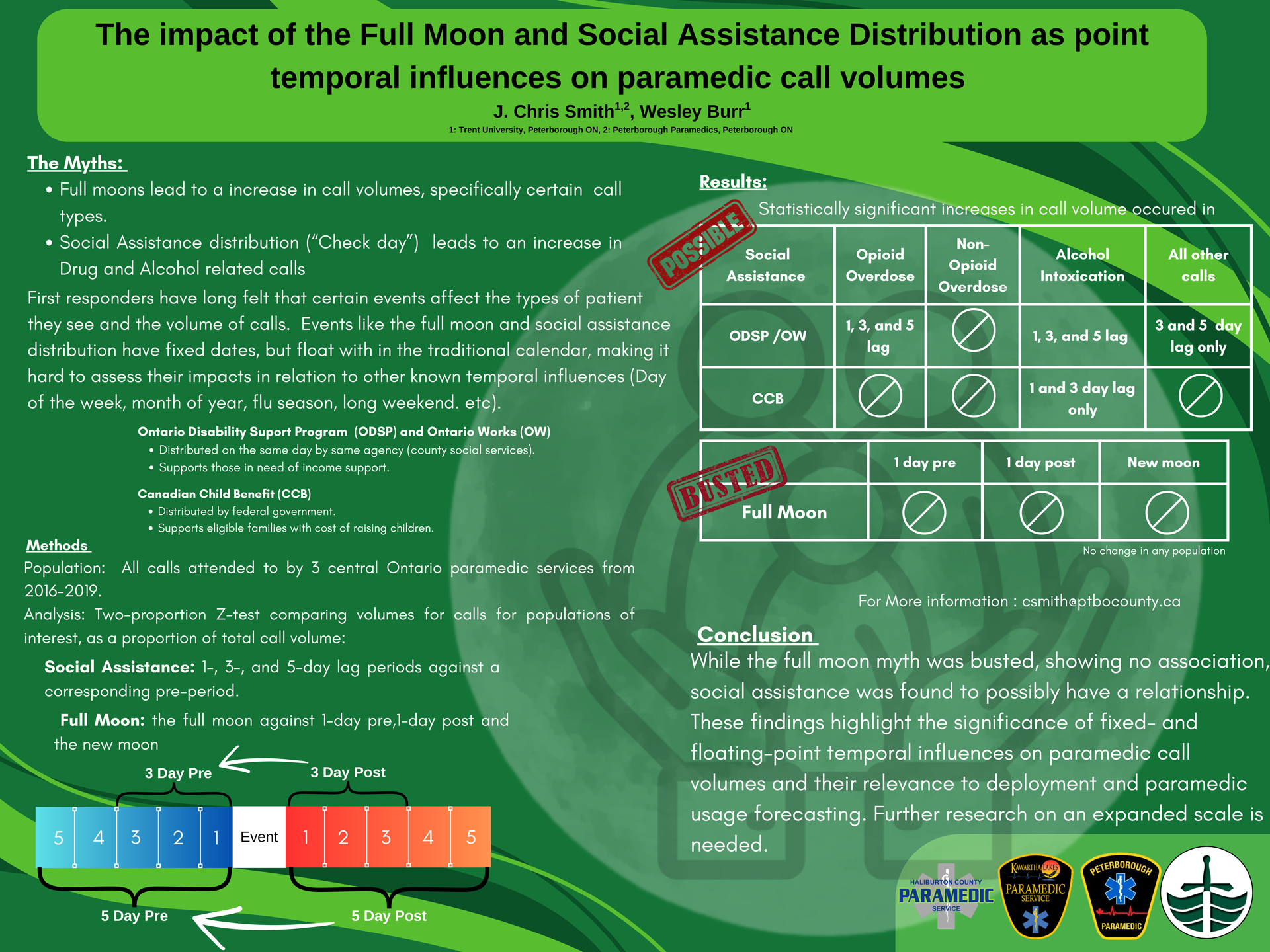|
The impact of the Full Moon and Social Assistance Distribution as point temporal
influences on paramedic call volumes.
J. Chris Smith 1,2
Wesley Burr 1
1: Trent University, Peterborough ON
2: Peterborough Paramedics, Peterborough ON
Introduction:
While the overall flow of paramedic call volumes is relatively stable over time, most
paramedics will tell you that certain times of the month and certain days of the year are busier. Previous research has supported these feelings, showing increased motor vehicle collisions on long weekends, increased overall transports on the full moon, as well as increased use of safe-injection sites, overdose admissions, and police/ambulance call volumes in the week after social assistance distribution.
Objective:
This study examined the impact of fixed- and floating- point temporal influences on a day of month scale (social assistance distribution and full moon) on paramedic call volumes for alcohol related, drug related, and non-intoxication related calls.
Methods:
Social assistance relationship was examined using a two-proportion Z-test to compare
volumes for calls of interest, as a proportion of total call volume, in 1-, 3-, and 5-day lag periods after the point influence with a corresponding pre period for three central Ontario ambulance services from 2016-2019. Full moon analysis used the same method but compared the full moon against 1-day pre,1-day post and the new moon. A post-hoc analysis examined “spike days” in drug related calls unrelated to known point temporal influences.
Results:
Alcohol related calls showed statistically significant increases in the 1-, 3-, and 5-day lag period (p<0.001), opioid related calls showed a statistically significant increase in only the 3-day lag (p<0.001), while non-intoxication related calls showed a statistically significant increase in the 3- and 5- day lag ( p<0.037). The full moon had no statistically significant changes in call volumes. Post hoc analysis identified statistically significant increases on the 13th and 20th of the month for opioid and 18th of the month for non-opioid related overdoses. Lived experience input partially identified one of these spike days as being related to social assistance.
Conclusions:
The impacts of point temporal influences are likely to be highly regionally and culturally specific. These findings highlight the significance of fixed- and floating-point temporal influences on paramedic call volumes and their relevance to deployment and paramedic usage forecasting. Further research on an expanded scale is needed.
For more information, please contact:
Chris Smith (he/him)- ACP, MSc,
Superintendent Sta???? Development and Wellness,
Peterborough Paramedics,
csmith@ptbocounty.ca
Cell: 249-3871437
|



